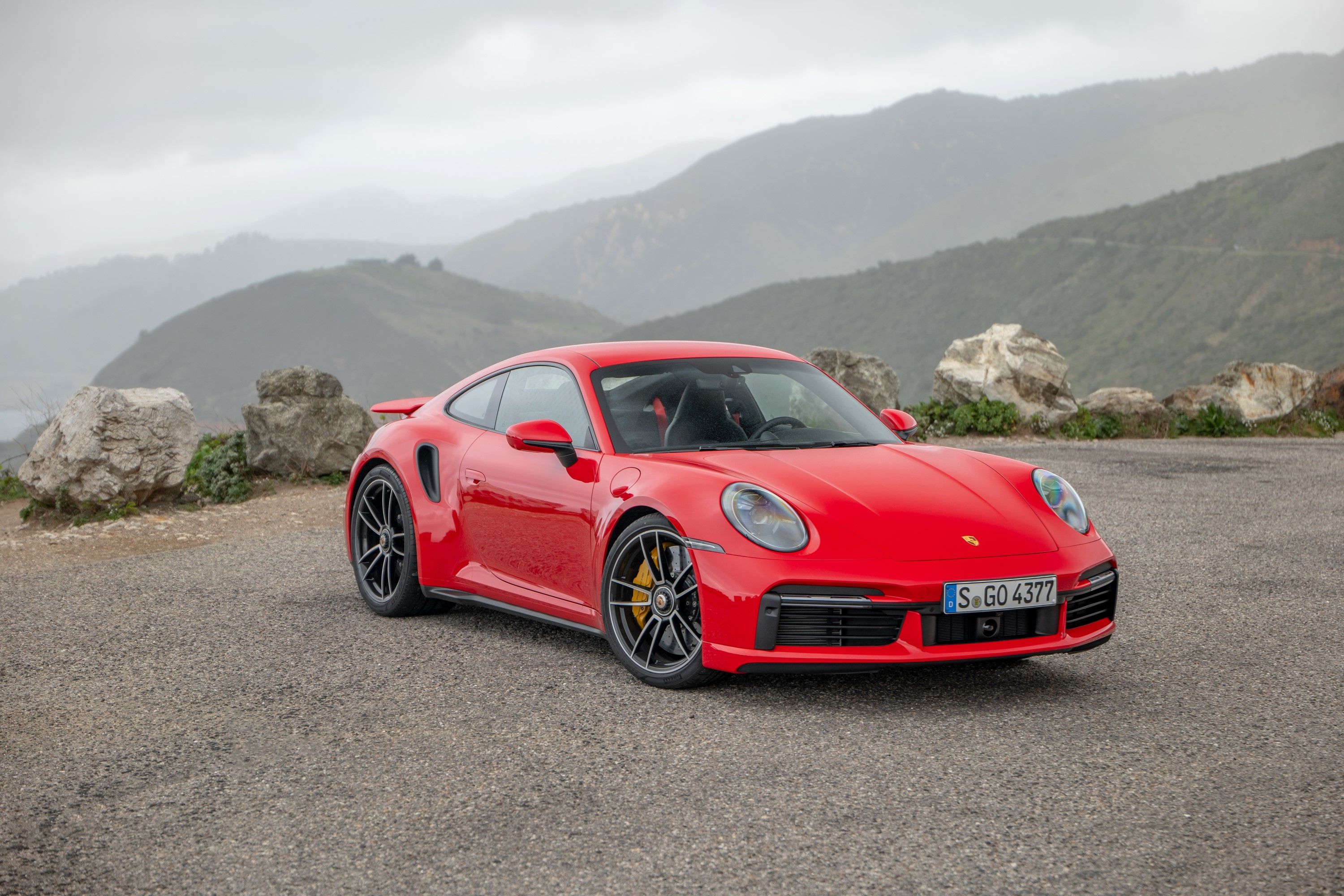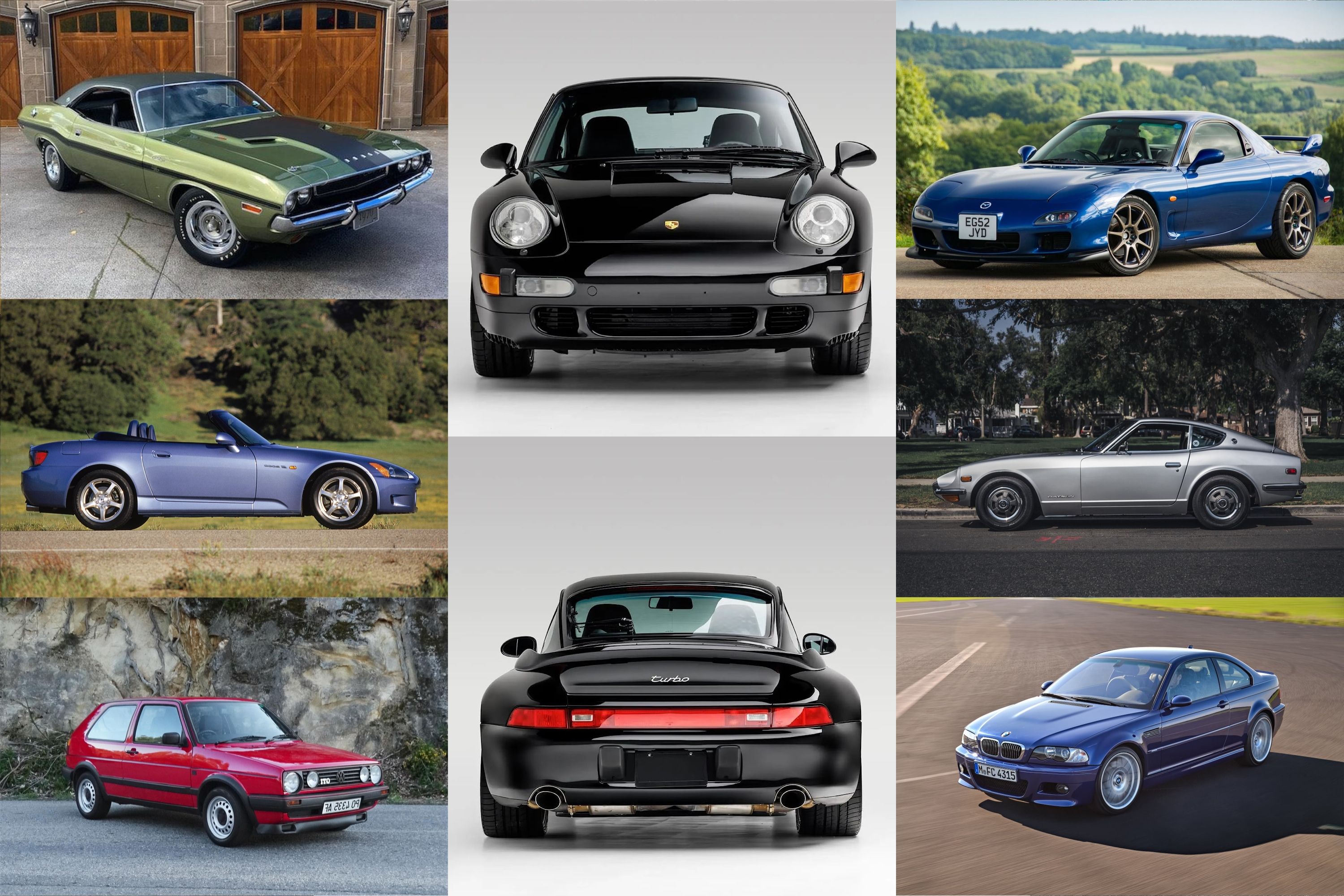
Car design is fickle, but some general rules of success exist. The most obvious is that a car built today to look futuristic will look dated tomorrow. Then, it's a safe bet that a car loaded up with current fashion trends will also look tired in the future. However, a car that may be bland today will be much of the same in the future. As we research, we understood better than before that designing a car that ages well is an incredible task. Building something timeless requires designers that are at the top of their game but know how to reign it in at exactly the right points. And these are all timeless shapes.
1970 Dodge Challenger R/T
If anything defines what we mean here as a timeless classic, it's the first-generation Dodge Challenger. The 1969 Dodge Charger would also fit this list, but the Challenger was so good that Dodge gave most of the 1970 Dodge Challenger R/T's design cues to the 2008 reboot. That third generation is still in production and selling well 14 years later with no signs of aging due to precisely chosen modern design updates and adding a widebody version to the classic style and shape. It's a safe assumption to make that when Dodge launches an all-electric version, the changes will mostly be in the lights and minor embellishments because the rest is just fine.
Honda S2000
For a large swathe of car enthusiasts, the Honda S2000 hit exactly right when it started leaving the production line in 1999. It was a slightly bigger take on the rear-wheel-drive, four-cylinder powered roadster than the MX-5. The 2.0-liter V-TEC engine is still wildly entertaining to drive and wring out to its 8,000+ rpm redline, and it has the design to match. Designer Daisuke Sawai started work on the S2000 in 1996 and carried it through in the tradition of the S500, S600, and S800 roadsters of the 1960s. The end result is a chassis that Honda could release now with an update with LED clusters at each corner and would sell like mad in the face of new proper sports cars like the Nissan Z, Toyota 86, and venerable yet taut and capable Miata. The aspect that dates the S2000 more than most is the interior of the pre-facelift models.
BMW 3 Series Coupe (E46 Chassis)
One timeless contemporary design is the E46 chassis BMW 3 Series, and the coupe in particular. So much so that you can still see its proportions in the modern 2 Series today, which is weirdly close to the E46 3 Series in dimensions. The naturally-aspirated M54 straight-six engine still delivers the kind of smooth, strong torque that BMW strives to recreate with its turbo-four and turbo-six engines today and the E46 M3 cranks up the power and style. Design began in 1994 under Chief Designer Chris Bangle, while Erik Goplen was responsible for all the E46's body styles via a contract with Designworks USA.
Porsche 911 (All Generations)
Detractors often claim that the Porsche 911's design never changes, and that means it's boring. These people are what we like to call, wrong. The reason the 911 slowly evolves rather than changes is that the original design is just so darn good. The sloping rear, long hood, and pronounced headlight tunnels formed by the fenders make for an iconic silhouette that Ferdinand Porsche nailed down on his first pass for its 1964 release. It's timeless but not frozen in time. If you pressured us and demanded a specific generation, we would say the 993-generation of the mid-to-late 1990s is the one that could be re-released today and need minimal updates to sell.
Volkswagen Golf GTI MKII
When Volkswagen dropped the MKII Golf in 1983, it had perfected a recipe for the hatchback. In terms of exterior design, Volkswagen took the previous generation's Giorgetto Giugiaro shape and lines and evolved them in-house. Volkswagen's design director at the time was Herbert Schafer, who helped shape the renewal of the brand. Schafer also worked on the Volkswagen Polo and Passat and was often criticized for his designs along the lines of being "solid, reliable and a bit boring." However, taking the hard edges off in the right places on the Golf helped ensure that the GTI's squat stance would add weight to near perfect proportions.
Datsun 240Z
Nothing helps a car keep its looks through the years like getting the proportions right. In the case of the Datsun, or Nissan if you prefer, 240Z, it's a short deck, two doors, a long hood, and lines that create a fluid and distinct silhouette. We would go as far as saying we wished Nissan had leaned more into the round headlights of the original for the new Z, but there's a reason Nissan didn't play too much with the original formula for the shape.
The 240Z's designer Yoshihiko Matsuo died in 2020, but his legacy continues in the new Nissan Z car. Nissan's current design chief Alfonso Albaisa said Matsuo's design "expressed Nissan's DNA in one vehicle." It's hard to argue with that or argue it wouldn't sell sitting at Nissan dealers today.
Mazda RX-7 (FD3S Chassis)
The fact that Mazda hasn't built on the RX-7 like Dodge has with the Challenger is frustrating for enthusiasts as it's a car begging to make a comeback. With a few minor tweaks and a set of well-integrated modern headlamps, the third-generation Mazda RX-7 (chassis code FD3S) wouldn't look out of date amongst modern cars on the road. The only real giveaway would be the low beltline. For a car that hit the road in 1992, that's a fantastic testament to Chief Designer Yoichi Sato and Wu-Huang Chin, a Taiwanese automotive artist who also worked on the Mazda Miata back in the day. It's a shape and style modern sports cars still take inspiration from and has a fluidity and stance that makes us think more of supercars than sports cars.
There are new rumors of a rotary RX-7 coming back to the market, but frankly, we're not holding our breath. At least once a year Mazda likes to set that rumor floating, but the rotary engine's time has come and gone.

